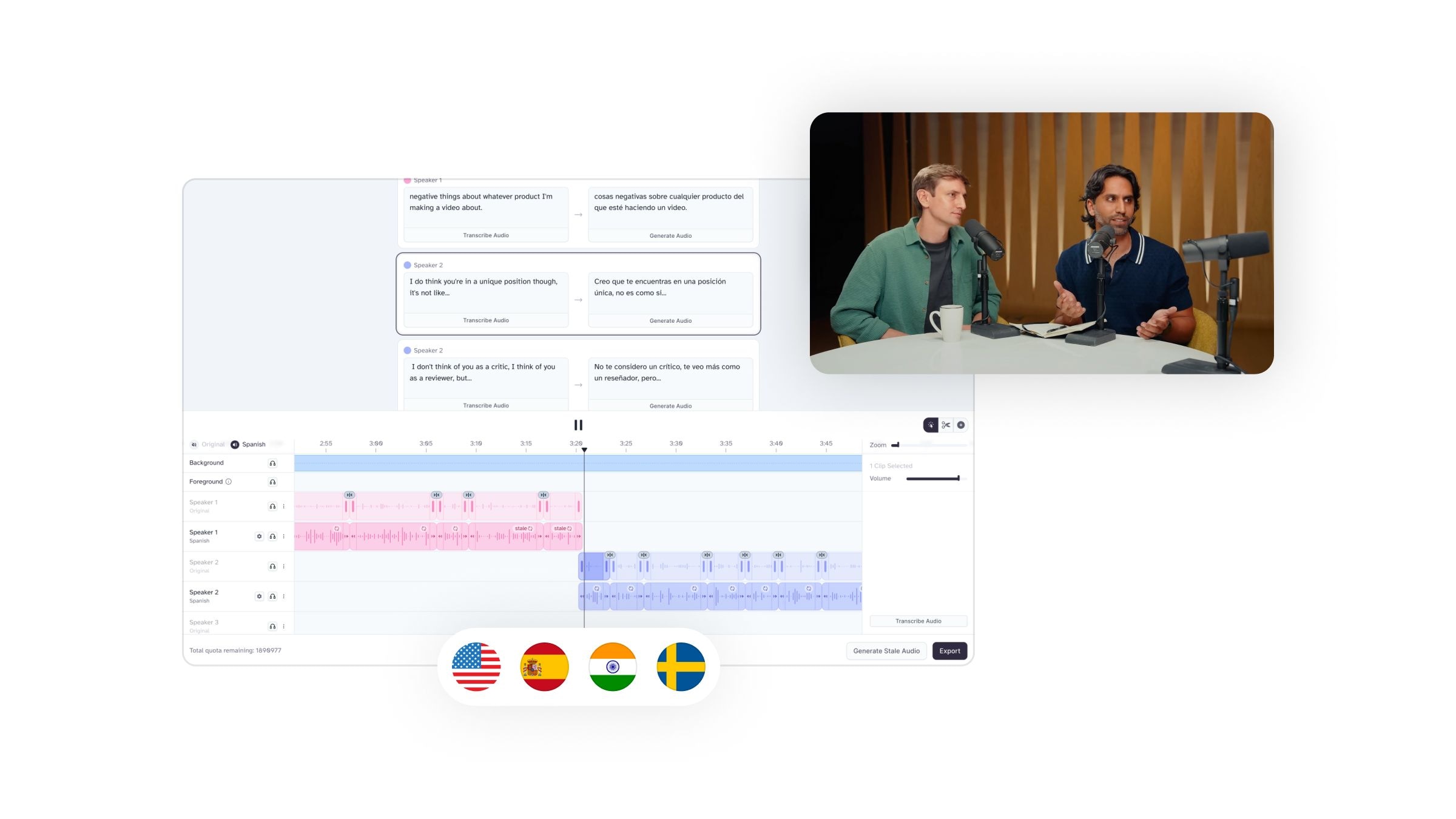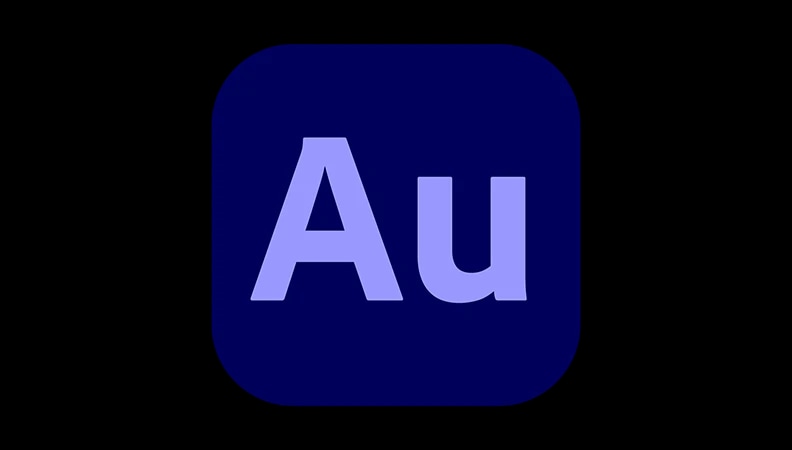
Translate audio and video while preserving the emotion, timing, tone and unique characteristics of each speaker
Introducing Eleven v3 (alpha)
Try v32024's leading podcast and video creation software
Looking to produce top-quality podcast or video content? If so, you'll need to use the right tools.
This article outlines the best 6 audio tools for podcasters and video creators. These tools cater to a range of needs, from basic recording and editing to advanced features like noise reduction and sound effects.
Streamline the creation process with the right audio editing tools and start producing content that stands out on platforms like Apple Podcasts, YouTube videos, and beyond.
Let’s dive in.

A free digital audio workstation, Audacity is excellent for podcast recording software. It offers all the tools needed for editing podcasts and producing high-quality audio recordings with ease.
Pros:
Cons:

This leading podcast editing software provides a comprehensive editing platform, including advanced tools for professional-level audio and integration with podcast hosting platforms, ideal for most podcasters.
Pros:
Cons:
As user-friendly recording software, Acoustica ensures superior podcast editing with precision tools for high-quality audio recordings, though it lacks broader integration for hosting and feedback.
Pros:
Cons:

An AI-driven digital audio workstation, ElevenLabs enhances podcast recording with realistic voiceovers and advanced editing. In addition to synthetic voices, ElevenLabs recently teased an AI Sound Effects library, currently in development.
Pros:
Here are a couple of examples of ElevenLabs' lifelike voices.
Example Generated Voice
Cons:

Descript, a unique editing platform for both audio recordings and podcasting, offers quick corrections and synchronizes audio for video. However, it's more suited to editing podcasts than full music production.
Pros:
Cons:

With an intuitive interface, Filmora excels in blending audio and video, supporting podcasters with a range of effects to enhance audio recordings and meet listener expectations, though its focus on video may limit some podcast-specific features.
Pros:
Cons:
Dubbing is one of the most useful features audio tools for video creators and podcasters can offer. Being able to create content in multiple languages is a must for content creators looking to reach a global audience.
Here’s how it works with ElevenLabs AI Dubbing:
Podcast audio and video audio have distinct requirements that affect the choice of editing software and tools. Podcasts typically focus on clarity and depth of the audio tracks. Therefore, creators rely heavily on podcast editing software for noise reduction and ensuring consistent sound levels across episodes.
On the other hand, video content creators must synchronize video tracks with audio, demanding tools that can handle both audio and video editing. For video podcasts, the challenge is to balance both aspects. Creators must use audio interfaces and editing tools that support the seamless integration of high-quality audio with visual elements.
Audio tools are essential for producing professional-level audio quality and engaging content. The right tools—such as the six outlined above—combine a robust array of features with intuitive interfaces.
From the completely free Audacity to the professional-level Adobe Audition, there's a tool for every budget and skill level. Meanwhile, tools like ElevenLabs offer powerful dubbing capabilities to help creators' content go global.
Ready to start localizing your content for a global audience? Get started with ElevenLabs today.

Translate audio and video while preserving the emotion, timing, tone and unique characteristics of each speaker

Learn how ElevenLabs and Cartesia compare based on features, price, voice quality and more.

Unlocking the Power of AI Voiceovers for eLearning